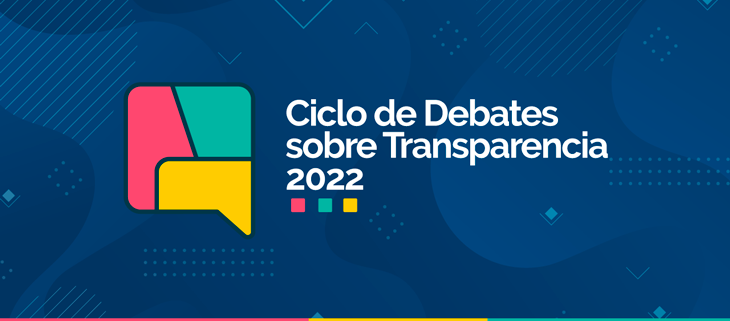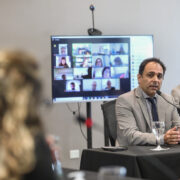Active Transparency: discussion on good practices and challenges
On Friday, June 3, the meeting Current practices and challenges in Active Transparency was held. The cases of Mendoza and the Autonomous City of Buenos Aires (CABA), organized by the group of NGOs that make up Fundeps, Nuestra Mendoza, the Center for the Implementation of Constitutional Rights, the Legislative Directory, Andhes, Salta Transparent and Acción Colectiva.
“Below, we offer a google translate version of the original article in Spanish. This translation may not be accurate but serves as a general presentation of the article. For more accurate information, please switch to the Spanish version of the website. In addition, feel free to directly contact in English the person mentioned at the bottom of this article with regards to this topic”.
The discussion took place in virtual mode and is the first activity to be carried out within the framework of the Debate Cycle on Transparency 2022, promoted by the group, with the aim of proposing conversations with officials in charge of the transparency agendas of different provinces and localities of the country. The proposal aims to generate an environment conducive to debate and exchange of experiences that contribute to strengthening the practices of active and passive transparency of all public powers and the effective exercise of these rights by citizens.
On this occasion, we spoke with Diego Seoane, Deputy Director of Access to Public Information (AIP) at the Office of Administrative Investigations and Public Ethics of Mendoza, with María Gracia Andía, Head of the guarantor body for Access to Public Information, and with Fernanda Araujo, Information Architecture Manager, both from CABA.
The first part of the meeting was dedicated to the institutional design of each jurisdiction and how they comply with the obligations of active transparency, that is, in what these levels of government must publish ex officio, given that both have laws that oblige them in this regard. . In this sense, Diego Seoane commented that in Mendoza, by Law No. 9070 of 2018, a single enforcement authority was established, which is the Office of Administrative Investigations and Public Ethics. It governs all the powers of the State and has jurisdiction over other laws such as the Public Ethics and Clean File. Within this Office, the Sub-Directorate for Access to Public Information, which is made up of two people, is the enforcement authority in everything related to AIP, it is the body for appealing requests for information and, in turn, has the function of control compliance with the active transparency of all regulated entities. The role of the Sub-Directorate is complemented by that of “Guarantor Officials” in each of the regulated entities, who are in charge of both the obligation to respond to requests for information and the active publication of information that provides Mendoza’s law.
Desde las expositoras de la Ciudad Autónoma de Buenos Aires, consulte que la ley N° 104 de 2016 estableció una estructura de dos niveles, compuesta por Órganos Garantes y Autoridades de Aplicación en cada uno de los poderes de la ciudad (Ejecutivo, Legislativo y Judicial). Las funciones de estas autoridades se complementan, los Órganos Garantes tienen la función general de promover este derecho, generar informes, elaborar convenios, realizar auditorías de oficio y actuar en caso de denuncias por incumplimiento de la ley en el poder del que depende. Por su parte las Autoridades de Aplicación gestionan los pedidos de información pública, cumplen con las obligaciones de transparencia activa, orientan a la ciudadanía en el ejercicio de este derecho, capacitan a los sujetos obligados dentro del poder correspondiente, entre otros. A su vez cuentan con las figuras de Enlaces para el cumplimiento de la transparencia pasiva, y de Referentes Institucionales y Operativos, para las obligaciones de transparencia activa en cada sujeto obligado.
In a second, they consulted on a practical practice of each dependency and the main challenges they noticed in the exercise of their functions. From Mendoza, the systematic monitoring that was done in the passive transparency process was highlighted as a good practice, that is, the requests for information that were made, which directly impacted the improvement of the active transparency process. He cited, for example, that from 130 requests made to the Housing Institute, they dropped to 30 once the information was made available and their website was improved. He also highlighted the fact of having a direct transparency button in each obligated subject and locating there everything that the law stipulates. He stated that this was a great advance because in the early stages, the information was recorded but it was disordered and even redundant. From CABA, the Transparency Portal appeared, which concentrates the active transparency obligations of the city government and the Active Transparency Index, which is a tool created to monitor transparency policies and access information therein. They also shared some experiences of focused transparency, that is, of specific interest for a certain group or group of people, such as a Guide that was prepared with synthesized information for Heads of Single-Parent Families.








